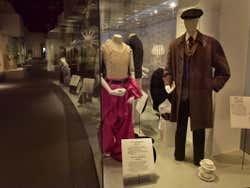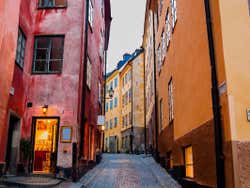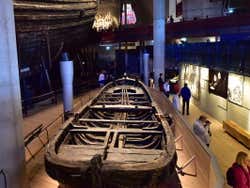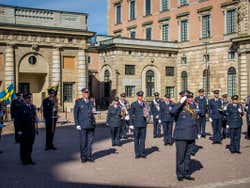
History of Stockholm
From its establishment in 1252 all the way up to present day, Stockholm has retained its status as Sweden's most prominent city and stands as one of Europe's most forward-looking, progressive capitals. Explore its Viking heritage, regal grandeur, and vibrant cultural identity.
Stockholm's origins
Stockholm's historical records date back to the mid-13th century, although Viking settlements once thrived in the ancient city of Birka. To establish a fortified core for safeguarding Sweden from foreign threats, King Birger Jarl founded Stockholm in 1252, particularly in what is now known as Gamla Stan, or Old Town. The chosen location, nestled between Lake Malaren and the Baltic Sea, paved the way for the city's remarkable growth, spanning 14 islands connected by 57 bridges.
The rise through the Hanseatic League
Stockholm's ascent as a prominent city coincided with its membership in the Hanseatic League, alongside fellow Scandinavian trading hubs such as Oslo and Copenhagen. In 1436, Stockholm became Sweden's capital.
The Stockholm Bloodbath
The city's early Modern Age was fraught with royal successions and conflicts with neighboring Scandinavian nations. During the 15th century, the kingdoms of Sweden, Norway, and Denmark formed the Kalmar Union under a single monarch. Sweden's bid for independence from this union in 1448 resulted in a Norwegian invasion.
King Christian II of Denmark orchestrated the infamous Stockholm Bloodbath in the Royal Palace. Initially disguised as a peaceful dinner, the event turned into a brutal massacre, as Christian II executed his noble, religious, and political guests, with their corpses left on Stortorget Square. However, a nobleman's son managed to escape and later returned to defeat the Danish forces. Sweden finally gained independence on June 6, 1523, marking Sweden's National Day.
Stockholm's royal family
The connection between Stockholm and Swedish royalty dates back to its early history. The Swedish monarchy established its royal residence in the capital, a tradition that continues to this day. The Swedish royal family resides in the Royal Palace in Stockholm, a location for numerous official events. Another key venue for royal functions is the Stockholm City Hall, where the Nobel Prize banquet has been held since 1986, following inventor Alfred Nobel's legacy.
Stockholm in the 21st Century
The mid-1950s saw the commencement of Stockholm's metro system, renowned for its status as the world's longest art gallery, featuring stations adorned with dreamlike landscapes. Additionally, Stockholm made headlines when the Vasa ship, a 17th-century vessel, was salvaged from the city's harbor. It's now on display at the Vasa Museum, one of Stockholm's best museums.
The 21st century brought significant events, including the assassination of Prime Minister Olof Palme in 1986, as he strolled with his wife in central Stockholm. In 2003, the city experienced another tragedy when Foreign Minister Anna Lindh was murdered in a Stockholm shopping mall.
Stockholm's continued growth was also marked by a surge in bicycle usage and the development of green spaces, resulting in the city's designation as the first European Green Capital in 2010. The recent influx of immigrants from various countries has contributed to the multicultural character of Stockholm.



